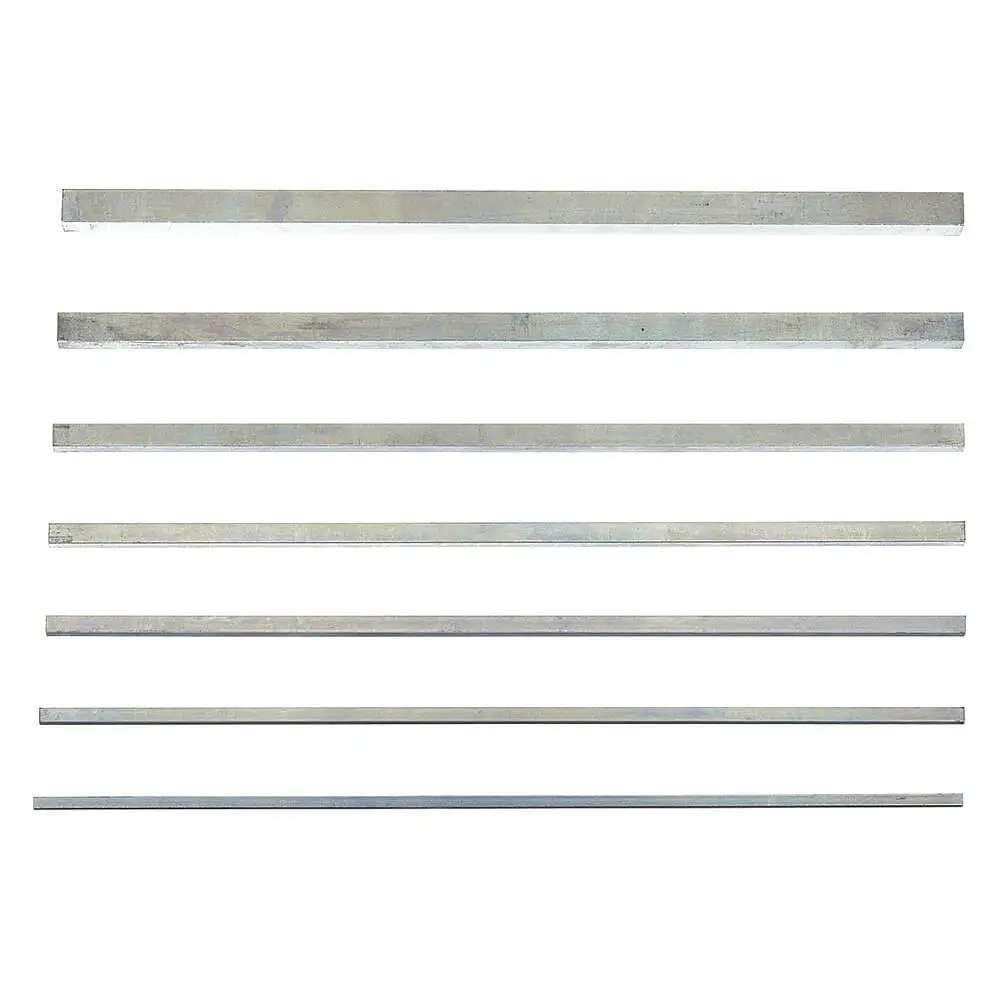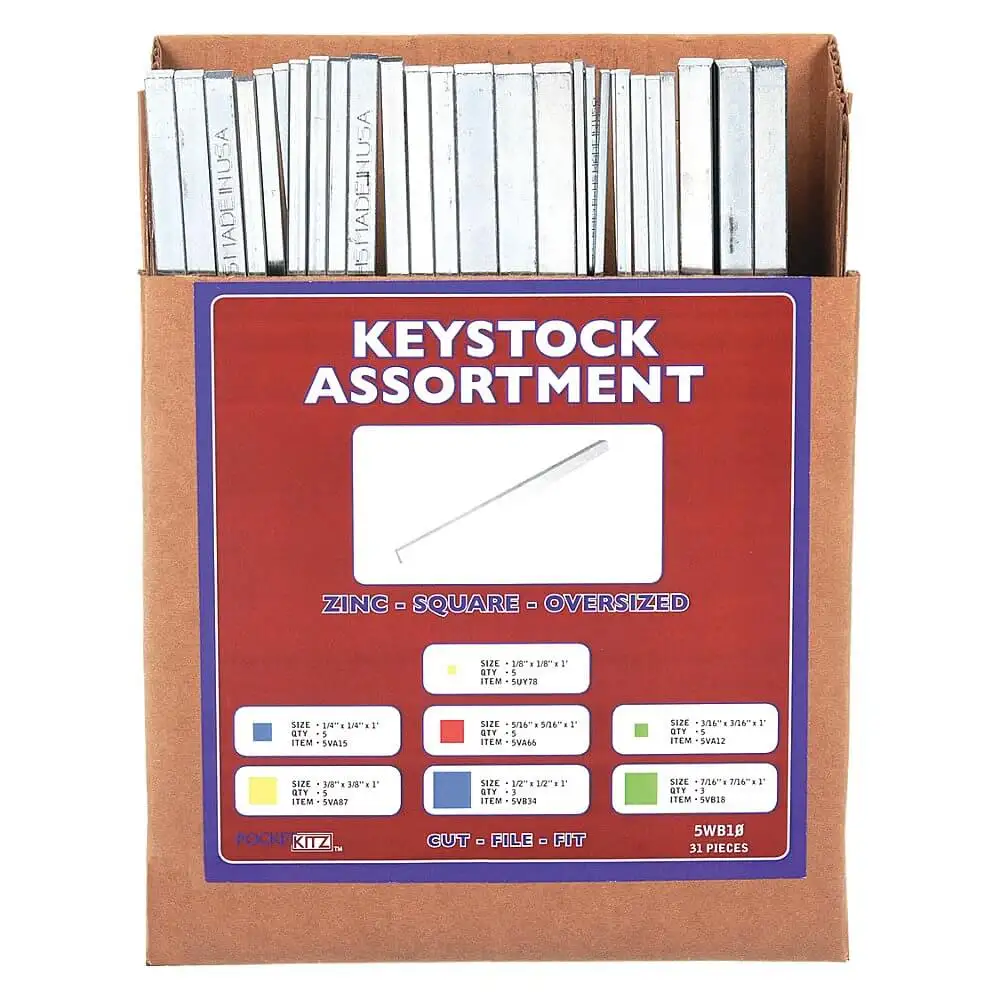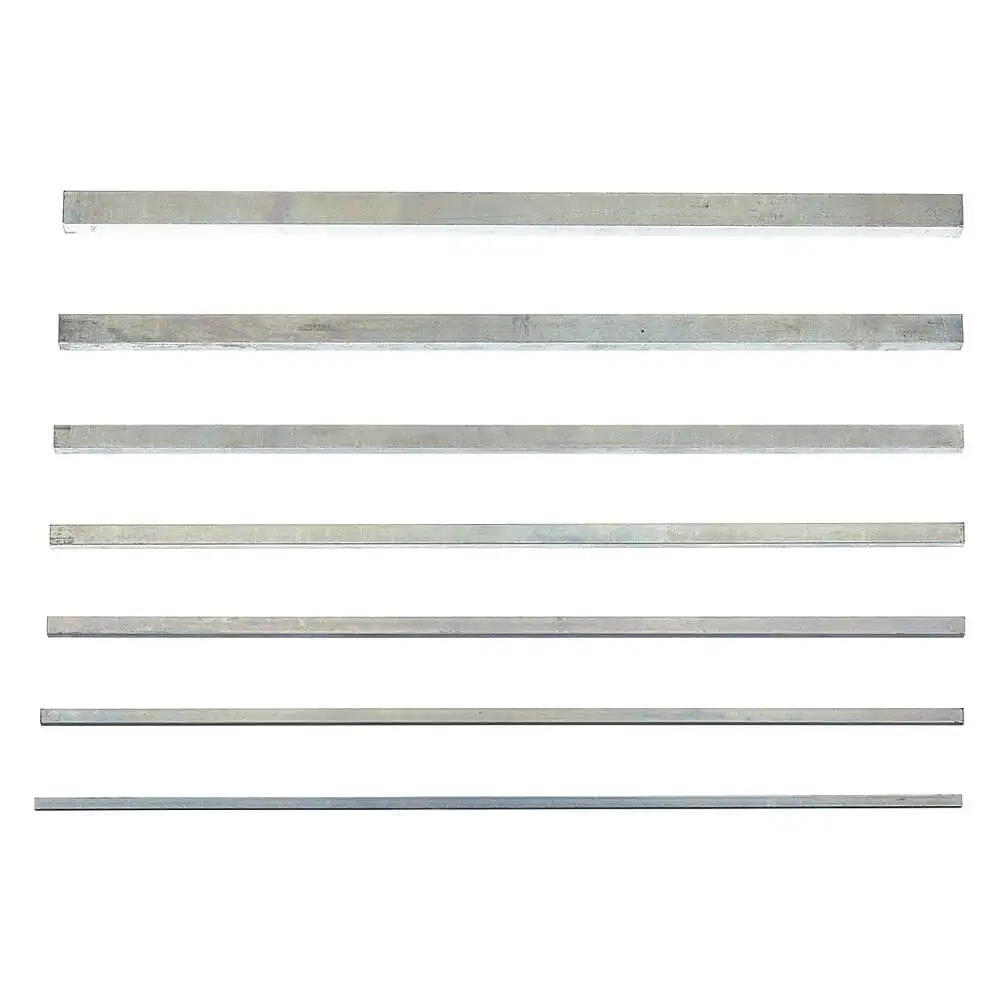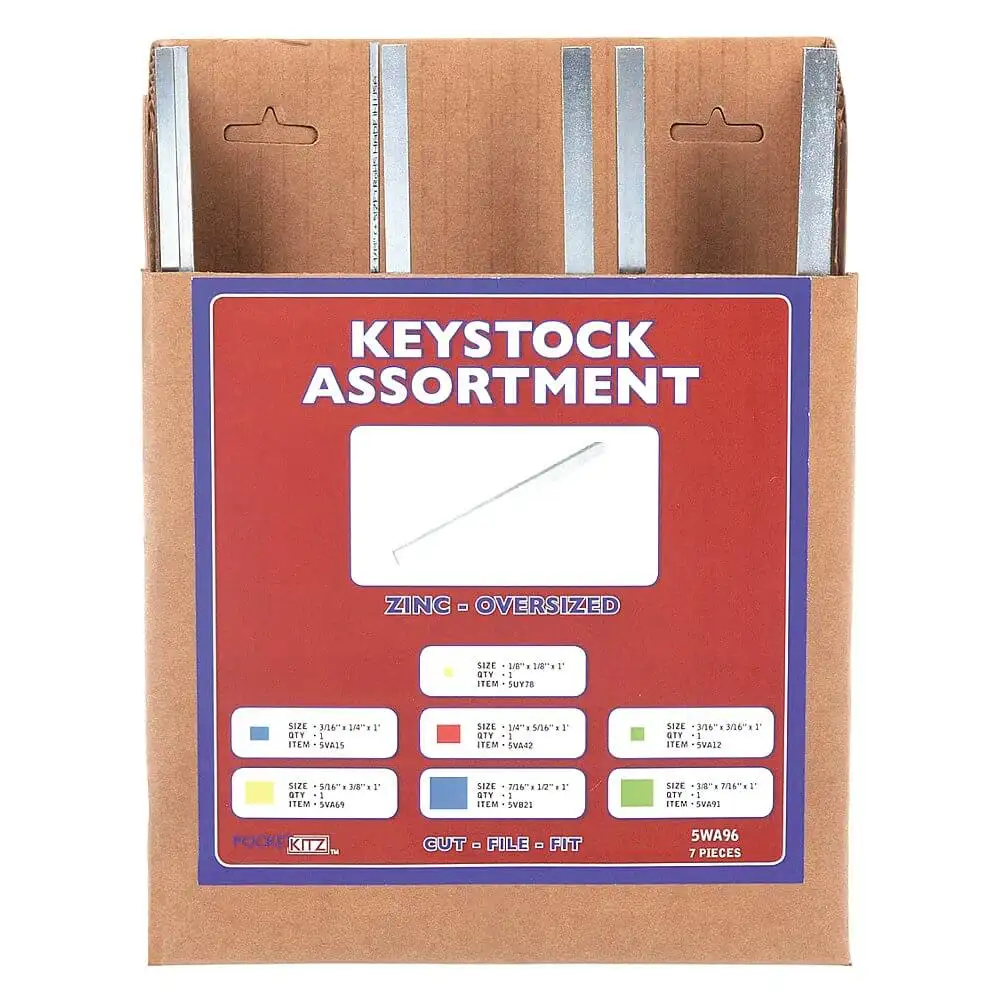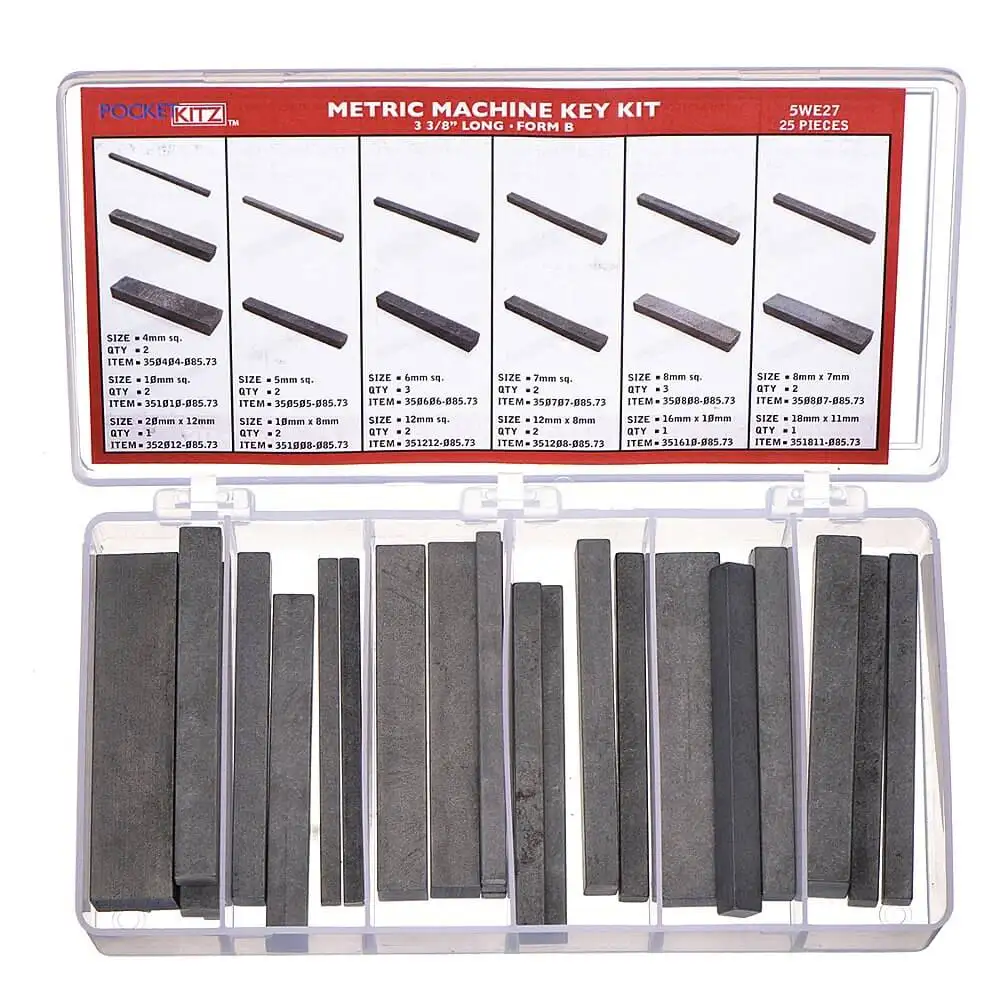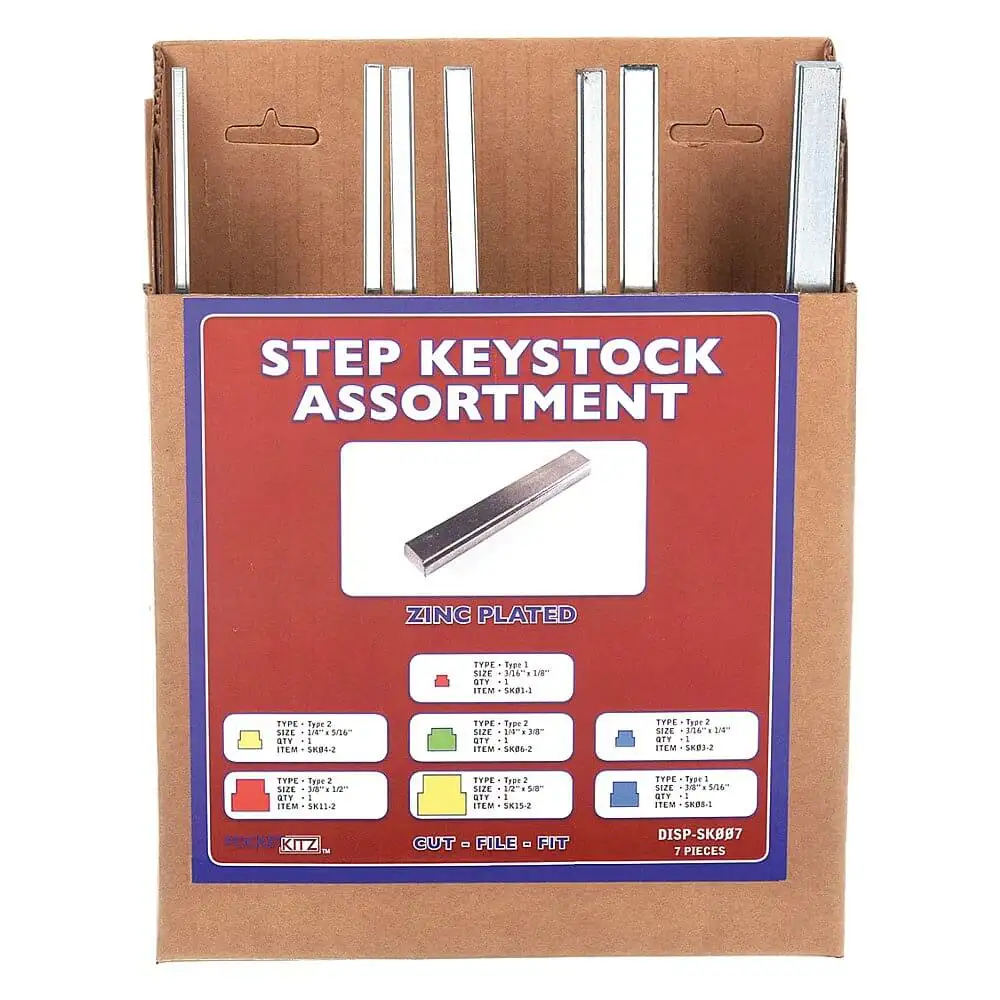Frequently Asked Questions
What is key stock?
Key stock is a stock of rectangular or square bars having a length greater than or equal to 12 inches from which machine keys are produced.
How do you cut key stocks?
Key stocks are generally cut for use as shaft keys with saws or cut-off discs.
What is the difference between key and bar stocks?
Key stock has crisp angles, parallel and perpendicular sides. They offer smooth, bright surface finishes because they are cold drawn to precise tolerances, whereas bar stocks are often hot rolled and maintain lower tolerances than key stocks.
How does a shaft key work?
- Shaft keys, also known as machine keys transmit torque from a rotating shaft to a gear or sprocket by fastening the shaft to a hub assembly or gear.
- A keyed assembly enables primary gears and driveshafts to rotate together normally.
- The machine key, however, may shear if forces are greater than the design limitations, preventing harm to other components.
- Machine keys serve as reliable safety stops for costly mechanical components.
How are woodruff keys measured?
Depending on whether it is an imperial or metric key, woodruff keys having a half-moon shape are measured in two different ways. Unlike metric woodruff keys, which are measured by their width and height, imperial woodruff keys are determined by their width and diameter.
How to measure a step key?
- First measure the width on both the thin and thick sides of the key.
- Then measure the height of the step on the key from both above and below.
How to remove a stuck machine key from a shaft?
- End Cutting / Side Cutting Pliers: They are used to securely grab the exposed machine key and allow the jaws' cutting edge to grip the key. Start pulling up while also shaking the key back and forth. Continue doing so until the key pops out of the keyway.
- Adjustable Locking Pliers: Similar to side-cutting or end-cutting pliers, they are adjusted to securely grip the lock & key in place but with much more strength. Rock the key back and forth until the key is released from the keyway.
- Slide Hammers with Locking Plier Attachment: Attach the machine key firmly to the movable locking pliers. Fasten the locking pliers to the slide hammer, and start moving the weight up the shaft while striking the stop. Repeat this until the machine key releases.
- Chisels / Hammers / Punches: Place the punch or chisel at the machine key's end. To release the machine key, whack the punch / chisel with a hammer. Place a punch at one end of a woodruff key and strike the punch downward to drive the key's end into the shaft. The key can glide into the slot owing to the half-moon shape, which forces the opposing end up.
- Welder & Slide Hammers: Attach the machine key to a bolt / pin by welding it. Fasten a slide hammer to the extrusion and start advancing the weight up the shaft while striking the stop. This force transfer shakes the key loose, as does the heat produced by welding.
 £ GBPChange Country
£ GBPChange Country